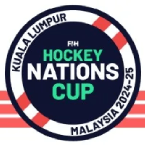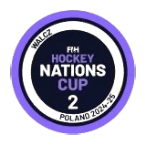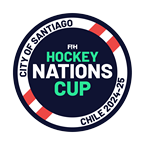
At the end of each hockey match at a major competition, you might have noticed the hordes of people who crush themselves into a small area, normally to the side of the players’ benches. These people might wield microphones, recording devices, pens and notepads or cameras and, for a few minutes, they seem to be involved in an almighty rugby scrum as they jostle for places at the front of the crowd.
Welcome to the world of media reporting at a sports event. This assortment of people are the world’s hockey press and the area they are operating in is known as the ‘mixed zone.’ It is the place where the players and the coaches give their post-match comments and short interviews, which then get written into the match reports and dispatched back to the office to re-emerge in newspapers, magazines and on websites.
This is a behind-the-scenes explanation of the written branch of the media operation at an international sports event.
At the Hockey World League Semi-Finals, the media will be out in force because this is where some of the Olympic places are being decided. The media will be after several different sorts of information. Most important will be the match results: who played who; who won; which players performed well; how their respective national teams are standing in the pool matches and knock-out stages. Then there will be the human interest stories – injuries, surprise omissions from the team, celebrating a milestone number of caps or a number of goals. Finally, there is the analysis. This comes after the event and is often a far more in-depth piece, either rueing a team’s failure to perform to their best or examining why a team has achieved so highly.
How the stories are disseminated has changed beyond recognition in the past few years. Leading the change has been social media and, in particular, Twitter. Now there are journalists whose sole job is to tweet throughout a match. The journalists will tweet about every piece of noteworthy action, giving the media outlet’s audience up-to-the-minute coverage of a match. For the hockey fan who cannot watch the match live or via online streaming, this is often the only way they can keep up with the action.
Journalists working for online publications will file their report as soon as they have all the information they need and the final written report will appear online within 20 to 30 minutes of a game finishing. This report will include a match report, plus comments from some of the players or the coaches that are gathered from interviews in the mixed zone after the game.
In some instances there will have been a press conference in addition to a game, in which case the journalist’s copy will be slightly delayed. Back in the head office, the editor will be tearing his or her hair out as they wait for the delayed copy to arrive, but at a press conference there is a chance you might get an insight or a snippet of information that is a world exclusive, making it worth the wait.
Print journalists will write a match report, which they will email back to their office and this will appear in the printed newspapers the next day. These journalists can afford a little more time, so the match reports will be more in-depth and the comments from players and coaches will be more detailed.
Aside from the actual matches, which provide the vast majority of the journalist’s copy, there are the press conferences or individual interviews that take place over the course of an event. Hockey is a sport where the players and coaches are quite accessible to the press. Journalists may request interviews with players or coaches which are scheduled for non-playing days. These will appear as feature articles or incorporated into larger analytical pieces. Such an example might be a coach’s opinion of rule changes or a player’s intentions to retire after a major tournament.
Finally, there are the press conferences which are arranged with officials, either from the host nation’s federation or with International Hockey Federation (FIH) officials. These are organised to explain developments in the game or announce new initiatives.
This article does not touch on the other forms of media – broadcasters and photographers – who are also in full operational mode throughout a major tournament but, if you see a harried-looking journalist rushing from pitch side to the press centre, give them room to run because rest assured a deadline is screaming to be met.























